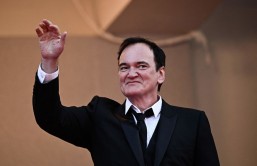Researchers found the remains of what may have been a water-rich planet orbiting a white dwarf outside of our solar system.
Using the Hubble Space Telescope, the researchers found an "excess of oxygen," which suggests the debris were once part of a rocky body that contained at least 26 percent water by mass, a Warwick University press release reported.
Past research has found evidence of water outside our solar system around gas giants, but this is the first time true evidence has been found of H2O in a rocky body.
"We know from our own solar system that the dwarf planet Ceres contains ice buried beneath an outer crust, and the researchers draw a parallel between the two bodies. Scientists believe that bodies like Ceres were the source of the bulk of our own water on Earth," the press release stated.
The team believes the water found around the dwarf GD 61 could have come from a small planet only about 55 miles around.
On this object, the water was most likely in the form of sub-surface ice as well. The researchers do not know the size of the planet for sure.
The object may have been as large as Vesta, which is the largest minor planet in the solar system. GD 61 may have been even larger than our own Sun, and the center of a bustling solar system. The star would have become a deadly white dwarf about 200 million years ago.
The small planet would have been knocked out of orbit and "shredded by the star's gravitational forces." A larger planet may have been present as well.
"At this stage in its existence, all that remains of this rocky body is simply dust and debris that has been pulled into the orbit of its dying parent star," Professor Boris Gänsicke of the Department of Physics at the University of Warwick, said.
"In these remnants lie chemical clues which point towards a previous existence as a water-rich terrestrial body. Those two ingredients - a rocky surface and water - are key in the hunt for habitable planets outside our solar system so it's very exciting to find them together for the first time outside our solar system," Gänsicke said.
The team said this finding could even mean that water-rich planets still exist in the GD 61 system.
"Our results demonstrate that there was definitely potential for habitable planets in this exoplanetary system," Lead author Jay Farihi, from Cambridge's Institute of Astronomy, said.








